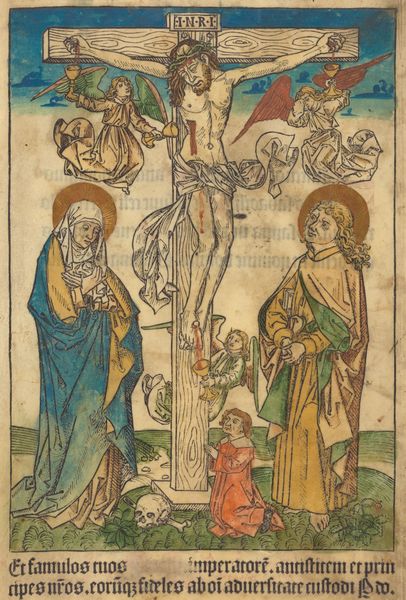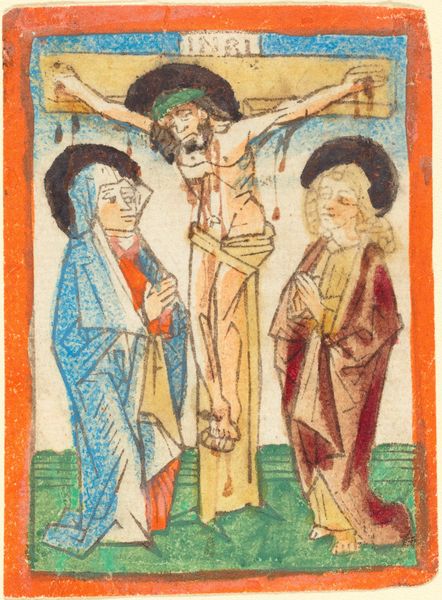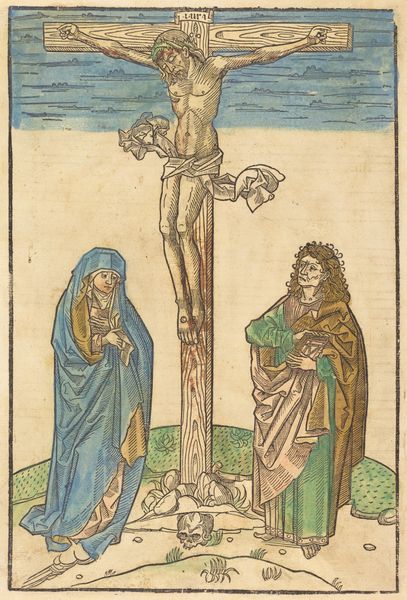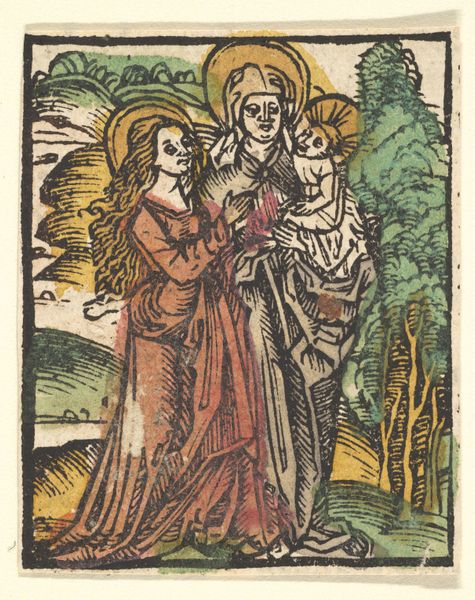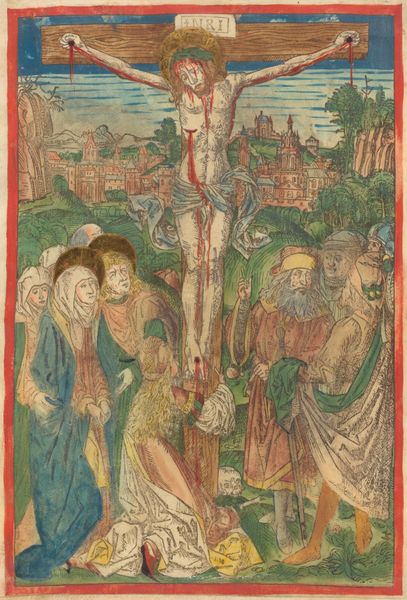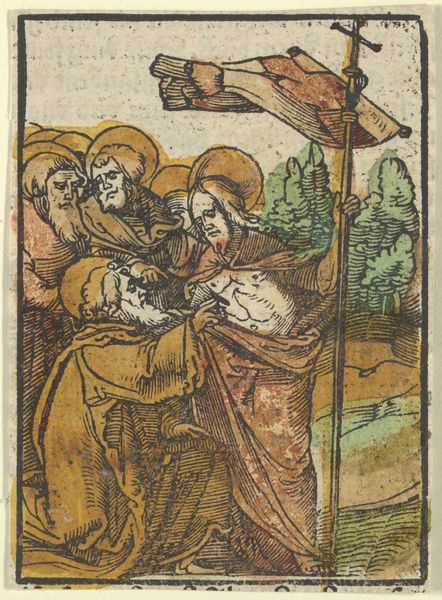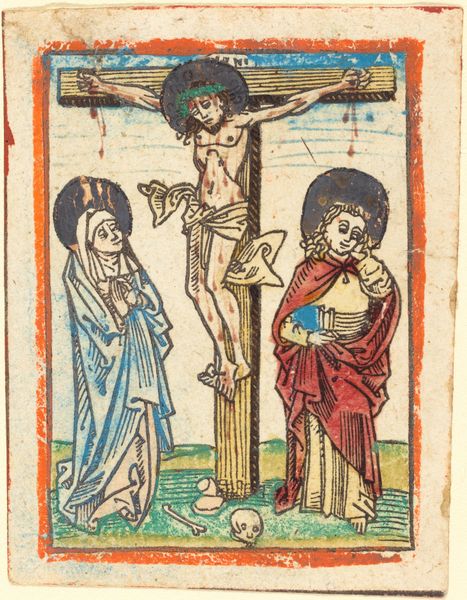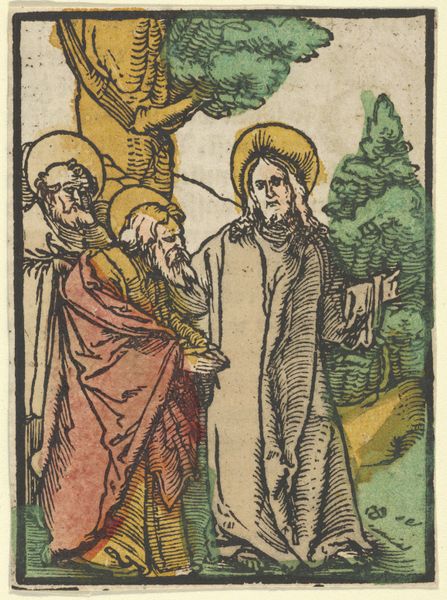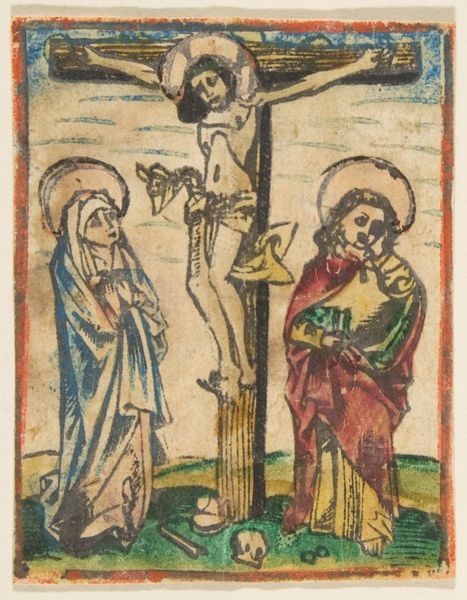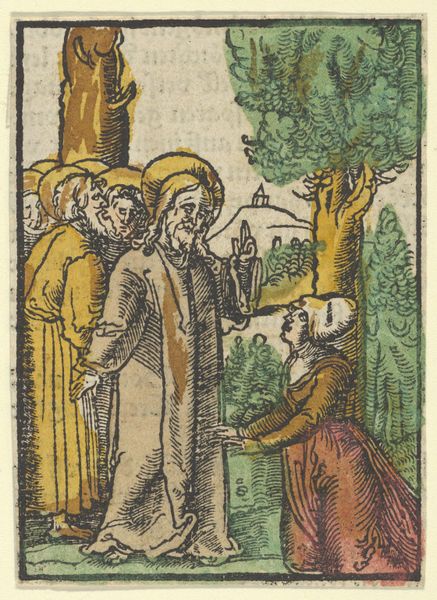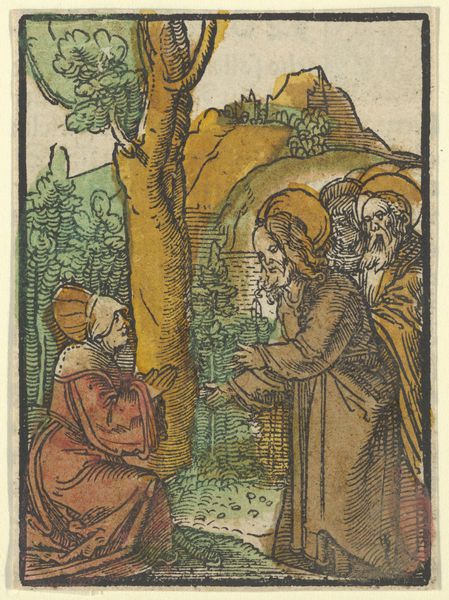
Christ on the Cross Between the Virgin and Saint John c. 1502
0:00
0:00
print, woodcut, engraving
# print
#
pen illustration
#
figuration
#
woodcut
#
history-painting
#
northern-renaissance
#
engraving
Copyright: National Gallery of Art: CC0 1.0
Curator: Looking at this woodcut from around 1502, Lucas Cranach the Elder presents us with "Christ on the Cross Between the Virgin and Saint John". The stark imagery is immediately striking. Editor: It certainly is. The compressed composition and somewhat garish colors evoke a strong sense of discomfort. The scene feels almost suffocating. Curator: Let's consider the materials. As a print, this work was inherently reproducible. Its existence speaks to a wider distribution and a potential engagement with a broader, perhaps less wealthy, audience. The use of woodcut also implies a certain level of labor and craft. The cutting of the block itself would require a skilled hand and understanding of the material. Editor: From a formal perspective, the linear emphasis is unavoidable. The harsh lines, cross-hatching, and strong contours all contribute to a visually arresting, albeit somewhat rigid, composition. Cranach’s application of color feels almost secondary, reinforcing certain areas while at other times creating a sense of awkward tension. Curator: Precisely. The fact it is a print informs its role in disseminating religious iconography at the time, in direct correlation to a burgeoning market for affordable art, allowing individuals greater opportunities for devotion in the private sphere, aligning itself with the upcoming Protestant Reformation. Editor: Focusing on the central figure, the distorted anatomy of Christ underscores his suffering. The Virgin and Saint John are similarly rendered, with elongated bodies and sorrowful expressions that invite contemplation on their grief and unwavering faith. The Latin inscription printed in the bottom of the work certainly amplifies this effect. Curator: Exactly. Moreover, considering Cranach's later association with the Protestant Reformation, it’s interesting to ponder how this image may have resonated politically and religiously within that climate, in the local material context. Editor: Analyzing this artwork makes me consider the relationship between devotional practice and the impact of visual elements in instigating feeling, prompting reflection on fundamental human experiences. Curator: I see it instead as revealing tensions about how such works helped challenge the church's orthodox, highlighting its function as both a commodity and religious device at the time. Editor: Indeed, this visual document offers plentiful avenues for understanding not only devotional attitudes, but how visual forms impacted an emerging Northern Renaissance sensibility.
Comments
No comments
Be the first to comment and join the conversation on the ultimate creative platform.

